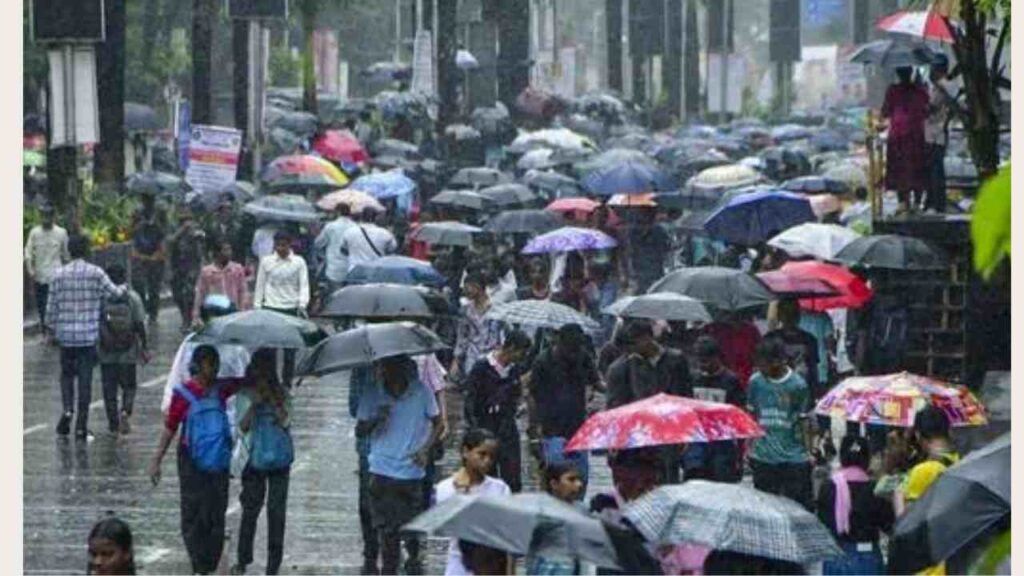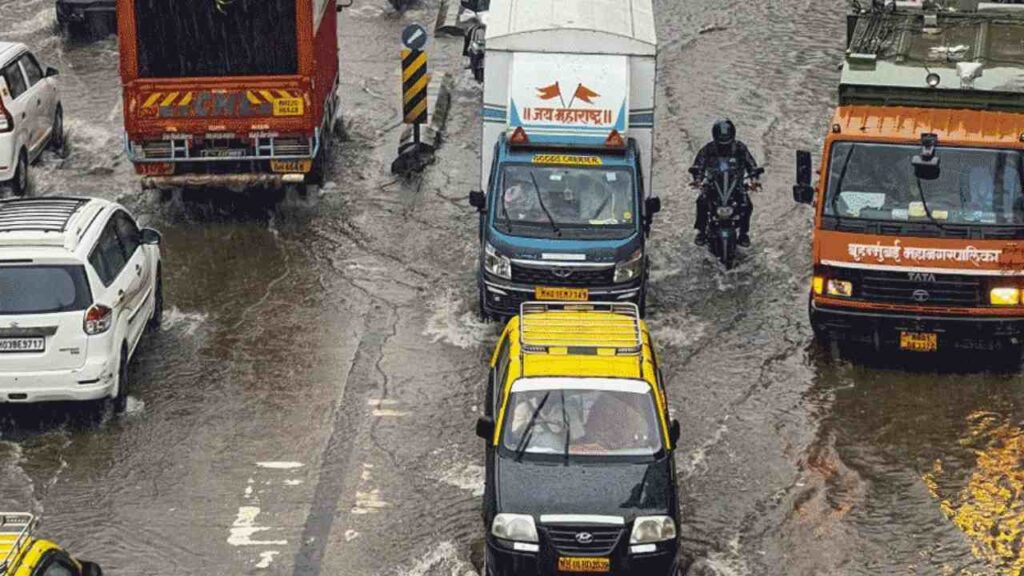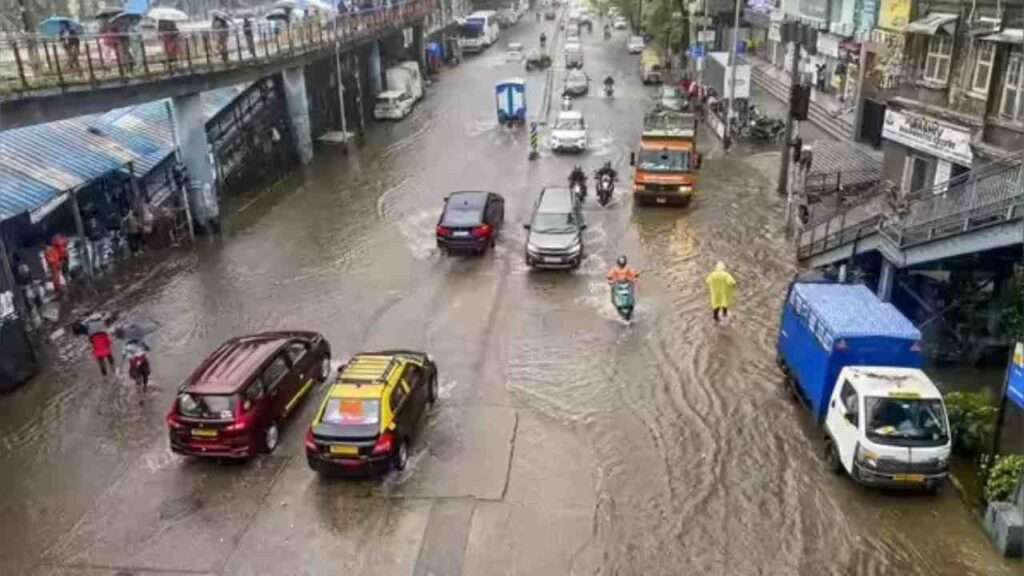Mumbai found itself battling nature’s fury for the third consecutive day on Monday as relentless monsoon rains transformed India’s financial capital into a city under siege. The India Meteorological Department’s red alert warning painted a stark picture of the challenges ahead, forcing authorities to take unprecedented measures to protect the city’s 20 million residents.

Educational Institutions Shuttered
In an unusual move that underscored the severity of the situation, the Brihanmumbai Municipal Corporation declared a holiday for all schools and colleges scheduled to begin afternoon sessions after 12 pm. The decision came as torrential downpours created hazardous conditions across the metropolis, making travel dangerous for students and staff alike.
A City Submerged
The morning hours proved particularly brutal for Mumbai’s infrastructure. From 9 am onwards, the intensity of rainfall escalated dramatically, with meteorological stations recording alarming figures. The island city was drenched with 37 mm of rain in just one hour, while the eastern and western suburbs received 39 mm and 29 mm respectively during the same period.
The eastern suburb of Chembur bore the brunt of nature’s assault, registering a staggering 65 mm of rainfall in a single hour. Close behind was Shivaji Nagar, which recorded 50 mm during the same timeframe, turning streets into rivers and playgrounds into temporary lakes.

Traffic Chaos and Transport Disruptions
Mumbai’s famous suburban railway network, often called the city’s lifeline, struggled under the weight of the monsoon assault. Trains were running 15 to 20 minutes behind schedule, creating a ripple effect of delays that affected millions of daily commuters. Passengers huddled in stations, watching helplessly as their carefully planned schedules dissolved in the downpour.
The city’s roads told a similar story of chaos. Critical areas including the Andheri Subway and the upscale Lokhandwala Complex became virtual islands surrounded by accumulated rainwater. Motorists reported severely reduced visibility, with many describing driving conditions as treacherous. The familiar Mumbai traffic crawled to an even slower pace as drivers navigated through waterlogged streets with extreme caution.
Despite the challenging conditions, the Brihanmumbai Electric Supply and Transport (BEST) bus services managed to maintain their routes without diversions, providing a crucial lifeline for those brave enough to venture out.
Regional Impact Spreads
The meteorological crisis extended far beyond Mumbai’s boundaries. The IMD’s red alert encompassed the neighboring districts of Thane and Raigad, where forecasters predicted heavy to very heavy rainfall with isolated pockets experiencing extremely heavy showers through Tuesday.
Further south along the coast, Ratnagiri district found itself under a red alert for Monday, while Sindhudurg was placed under an orange alert spanning both Monday and Tuesday, indicating the widespread nature of this monsoon system.
The Numbers Tell the Story
The 24-hour rainfall data ending at 8 am Monday revealed the true scale of the deluge. Mumbai’s island city recorded an average of 54.58 mm, while the eastern suburbs were drenched with 72.61 mm. The western suburbs, home to many of the city’s affluent neighborhoods and commercial centers, received 65.86 mm of rainfall.
Perhaps most concerning was the fact that several localities reported rainfall totals exceeding 100 mm during this period, pushing the city’s drainage systems beyond their capacity and creating the perfect conditions for widespread flooding.
A City’s Resilience Tested
As Mumbai residents wake up to another day of uncertainty, the meteorological department’s forecast of continued heavy rainfall through Tuesday serves as a sobering reminder of nature’s power. The city that never sleeps now finds itself forced into an unusual state of caution, with its famous spirit of resilience being tested once again by the annual monsoon challenge.
For a metropolis that prides itself on its ability to function despite adversity, these three days of continuous rainfall represent more than just a weather event—they serve as a stark reminder of the ongoing battle between urban development and nature’s fury in one of the world’s most densely populated cities.






